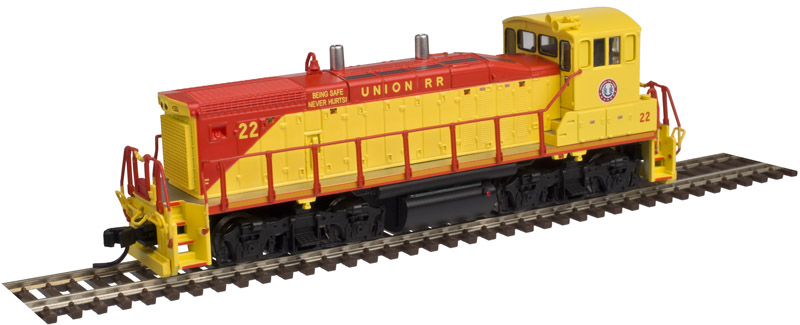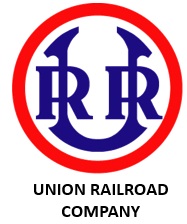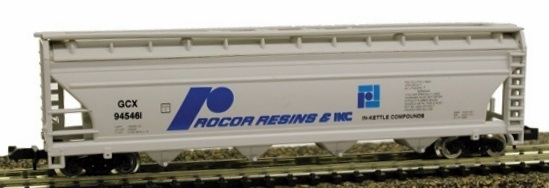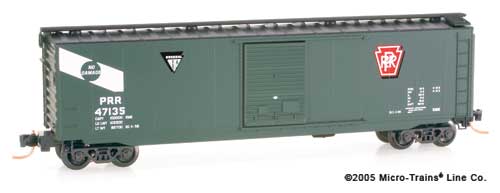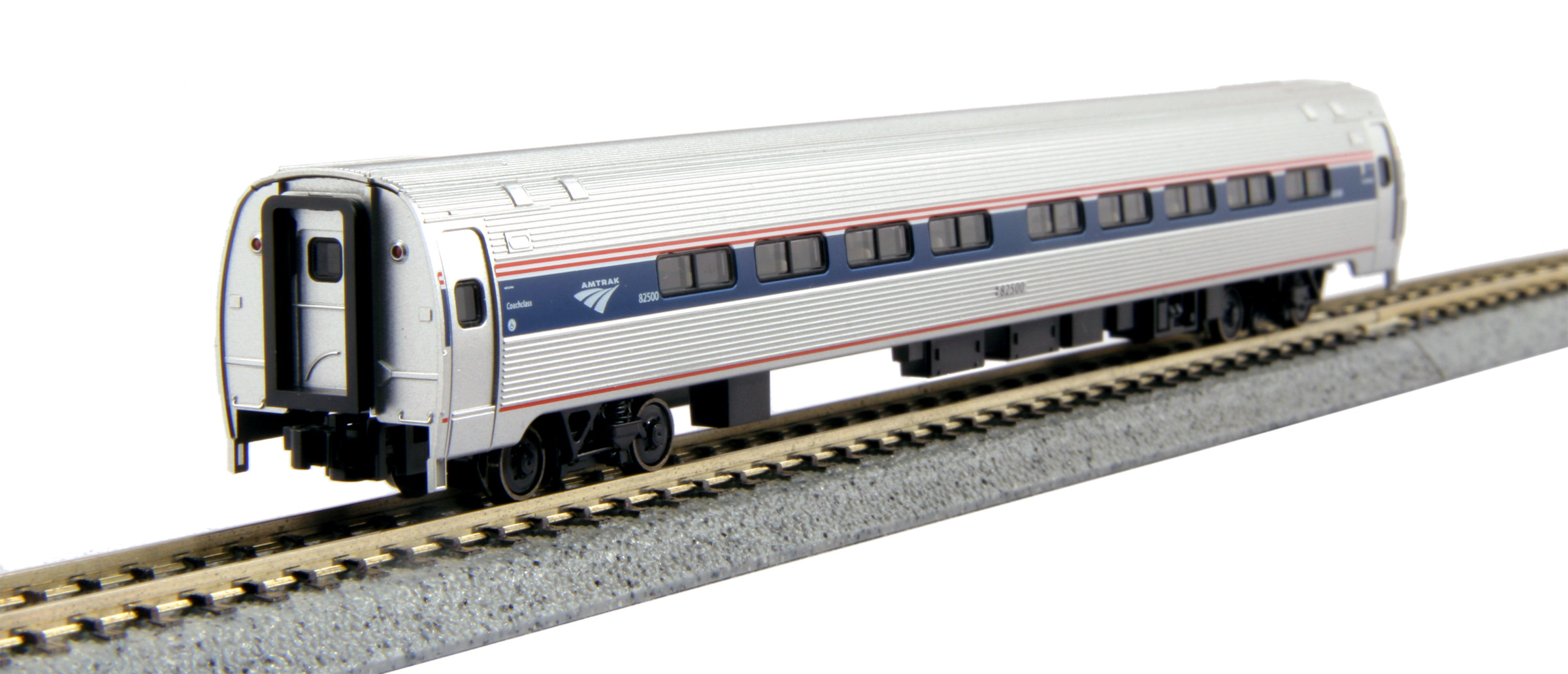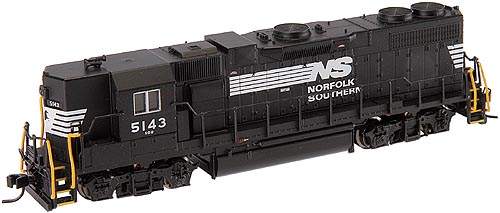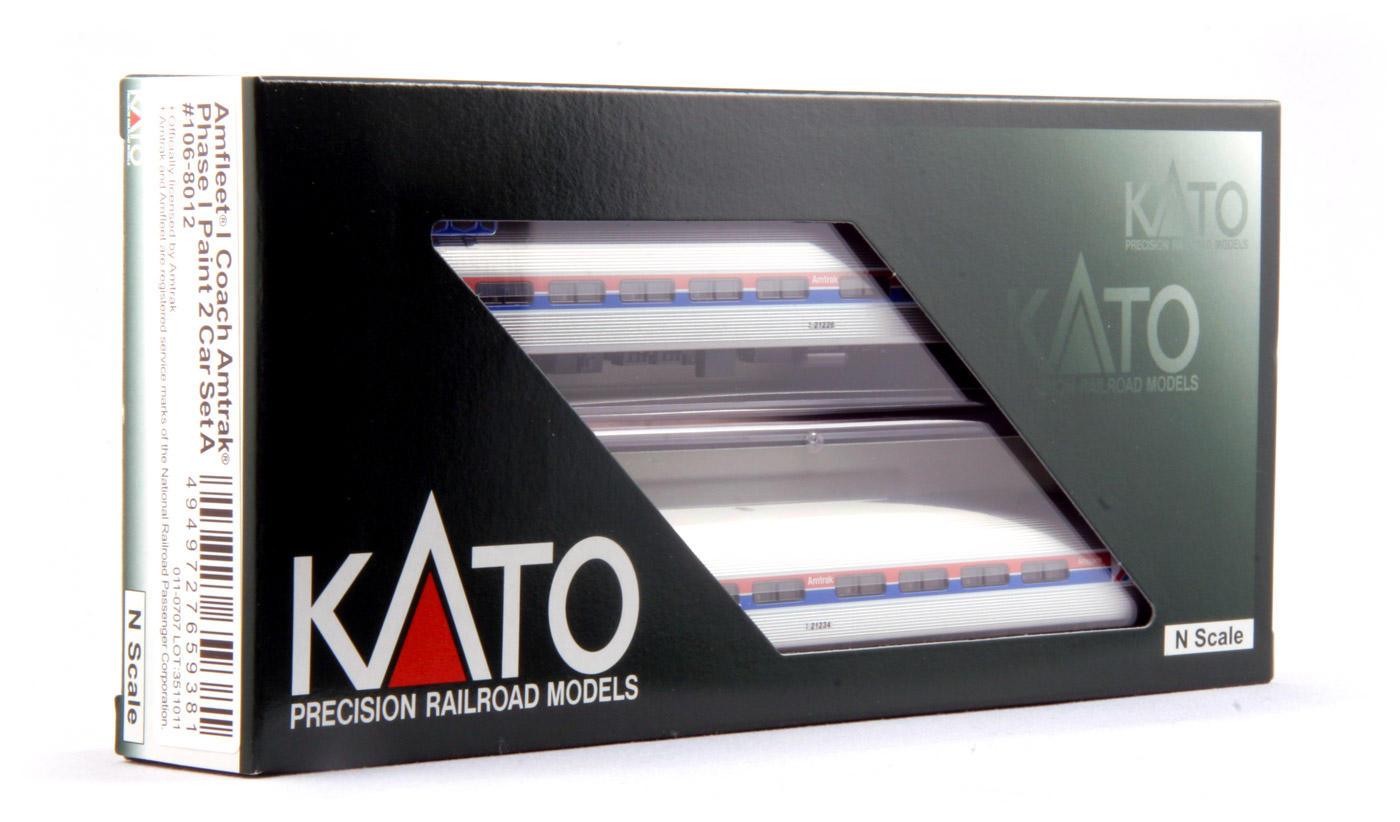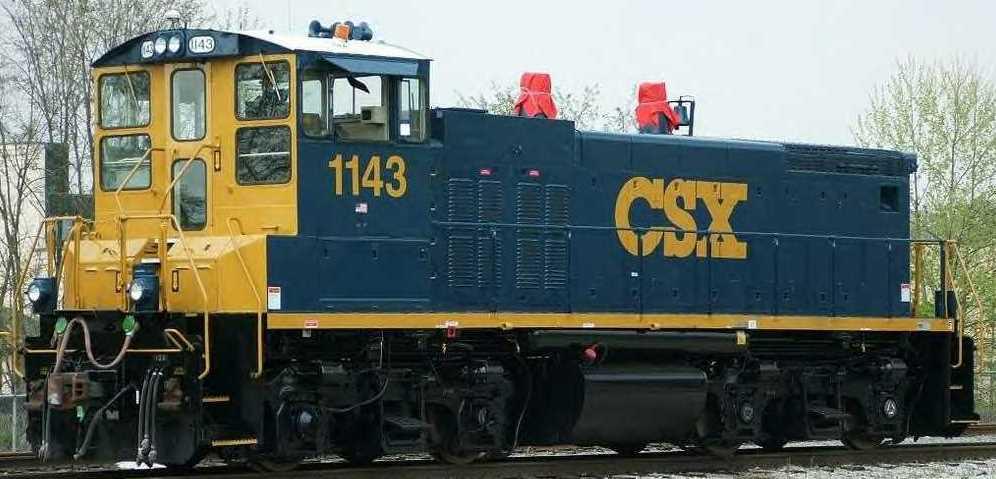Model Information: This model was introduced in 2005. It is designed in the USA and produced in China like almost all of Atlas' recent products.
The detail is very nice and the performance is quiet and smooth (except at low speeds, where you may hear a slight buzzing). Like all similar Atlas models, it uses blackened, low-profile wheels and "golden white" LED's. This engine can likely pull 20 cars or more on a flat surface.
The detail is very nice and the performance is quiet and smooth (except at low speeds, where you may hear a slight buzzing). Like all similar Atlas models, it uses blackened, low-profile wheels and "golden white" LED's. This engine can likely pull 20 cars or more on a flat surface.
DCC Information: It is a new-enough design to be fully DCC-Ready, and supports a simple drop-in decoder. The Digitrax DN163A3 is an example of such a decoder.
Prototype History: The EMD MP15DC is a 1,500 hp (1,100 kW) switcher-type diesel locomotive model produced by General Motors' Electro-Motive Division between March 1974 and January 1983. 351 examples were built.
A MP15AC variant, with an AC drive, was also offered. Between August 1975 and August 1984 246 MP15ACs were built, including 25 for export to Mexico, and four built in Canada. The MP15DC replaced the SW1500 in EMD's catalog, and is superficially very similar to the predecessor model, using the same engine (a V12 EMD 645-series powerplant) in a similar design of hood and bodywork. The primary difference is the MP15's standard Blomberg B trucks.
The third version, EMD MP15T, was essentially a variant of the MP15AC in that it featured a turbocharged prime mover, which was meant to be more fuel efficient (it was also slightly longer than the MP15AC) using only an eight-cylinder version of EMD's 645E prime mover (the other two models featured 12-cylinder 645s). Only 43 were built, all but one being manufactured for the Seaboard System.
From Wikipedia (MP15DC) and (MP15AC)
Read more on American-Rails.com
Full EMD MP15 data sheet on The Diesel Shop.
A MP15AC variant, with an AC drive, was also offered. Between August 1975 and August 1984 246 MP15ACs were built, including 25 for export to Mexico, and four built in Canada. The MP15DC replaced the SW1500 in EMD's catalog, and is superficially very similar to the predecessor model, using the same engine (a V12 EMD 645-series powerplant) in a similar design of hood and bodywork. The primary difference is the MP15's standard Blomberg B trucks.
The third version, EMD MP15T, was essentially a variant of the MP15AC in that it featured a turbocharged prime mover, which was meant to be more fuel efficient (it was also slightly longer than the MP15AC) using only an eight-cylinder version of EMD's 645E prime mover (the other two models featured 12-cylinder 645s). Only 43 were built, all but one being manufactured for the Seaboard System.
From Wikipedia (MP15DC) and (MP15AC)
Read more on American-Rails.com
Full EMD MP15 data sheet on The Diesel Shop.
Road Name History: The URR opened in 1896 to serve the steel producing Monongahela River Valley region south of Pittsburgh. In 1937, it merged two other local lines. The Union is just 31 miles long but very busy. In 1951, they hauled 74 million net tons making URR the busiest railroad per mile of track in the world. The line is owned by U.S. Steel (and its successor) and at its peak served eight mills plus a number of other customers. Until recently, the tangle of Union lines crossed the Monongahela River four times. Today, Union serves USS Edgar Thomson Works which includes blast furnaces, basic oxygen process producing molten steel and a continuous caster; USS Irvin Works which includes rolling mills and finishing lines and USS Clairton Works which converts coal into coke.
The Union is the smallest railroad to have a steam locomotive wheel arrangement named for them. The uber-switcher 0-10-2 is called the Union type.
The Union diesel fleet has always been dominated by switchers, originally from EMD, Alco, and Baldwin but in later years from EMD exclusively. Road power over the years has included RS-2’s, DRS-6-6-1500’s, AS616’s, and in later years SD9’s and SD38-2’s. The number of diesels on the active roster seems to have peaked around 126 units – astounding for a 31 mile line.
Beginning in 1959 the dozen Baldwin DRS-6-6-1500’s were rebuilt with EMD prime movers and long hoods. The short hoods were also lowered. The crews called these rebuilts “buffalos.” These units retained their long hood as the front despite the nose chop and could be found leading in either direction.
Today there are 33 diesels on the active roster, all EMD SW1500’s and MP15DC’s. You may notice that all-switcher consists always have the cabs facing outward (since virtually all end cab switchers have the hood end as the front, the URR consists are nose to nose.) This method is gospel on URR and has gained favor on other lines due to improved sight lines when shoving with no loss when running with the cab end leading.
The Union connects with CSX, Norfolk Southern, CN (formerly Bessemer & Lake Erie), and Wheeling & Lake Erie at seven points along the route. Today's collection of photos takes us from the delivery of the 0-10-2's in 1936 to 1999. We will have the rest of URR collection with tomorrow's RRotD. It's worth noting that URR was known for having an aggressive security force during the transition era which explains the dearth of photos from that time.
The Union is the smallest railroad to have a steam locomotive wheel arrangement named for them. The uber-switcher 0-10-2 is called the Union type.
The Union diesel fleet has always been dominated by switchers, originally from EMD, Alco, and Baldwin but in later years from EMD exclusively. Road power over the years has included RS-2’s, DRS-6-6-1500’s, AS616’s, and in later years SD9’s and SD38-2’s. The number of diesels on the active roster seems to have peaked around 126 units – astounding for a 31 mile line.
Beginning in 1959 the dozen Baldwin DRS-6-6-1500’s were rebuilt with EMD prime movers and long hoods. The short hoods were also lowered. The crews called these rebuilts “buffalos.” These units retained their long hood as the front despite the nose chop and could be found leading in either direction.
Today there are 33 diesels on the active roster, all EMD SW1500’s and MP15DC’s. You may notice that all-switcher consists always have the cabs facing outward (since virtually all end cab switchers have the hood end as the front, the URR consists are nose to nose.) This method is gospel on URR and has gained favor on other lines due to improved sight lines when shoving with no loss when running with the cab end leading.
The Union connects with CSX, Norfolk Southern, CN (formerly Bessemer & Lake Erie), and Wheeling & Lake Erie at seven points along the route. Today's collection of photos takes us from the delivery of the 0-10-2's in 1936 to 1999. We will have the rest of URR collection with tomorrow's RRotD. It's worth noting that URR was known for having an aggressive security force during the transition era which explains the dearth of photos from that time.
Brand/Importer Information: In 1924 Stephan Schaffan, Sr. founded the Atlas Tool Company in Newark, New Jersey. In 1933 his son, Stephan Schaffan, Jr., came to work for his father at the age of sixteen. Steve Jr. built model airplanes as a hobby and frequented a local hobby shop. Being an enterprising young man, he would often ask the owner if there was anything he could do to earn some extra spending money. Tired of listening to his requests, the hobby-store owner threw some model railroad track parts his way and said, "Here, see if you can improve on this".
In those days, railroad modelers had to assemble and build everything from scratch. Steve Jr. created a "switch kit" which sold so well, that the entire family worked on them in the basement at night, while doing business as usual in the machine shop during the day.
Subsequently, Steve Jr. engineered the stapling of rail to fiber track, along with inventing the first practical rail joiner and pre-assembled turnouts and flexible track. All of these products, and more, helped to popularize model railroading and assisted in the creation of a mass-market hobby. The budding entrepreneur quickly outgrew the limitations of a basement and small garage operation. Realizing they could actually make a living selling track and related products, Steve and his father had the first factory built in Hillside, New Jersey at 413 Florence Avenue in 1947. On September 30, 1949, the Atlas Tool Company was officially incorporated as a New Jersey company.
In 1985, Steve was honored posthumously for his inventions by the Model Railroad Industry Association and was inducted into the Model Railroad Industry Hall of Fame in Baltimore, Maryland. In addition, Steve was nominated and entered into the National Model Railroad Association Pioneers of Model Railroading in 1995.
In the early 1990s, the Atlas Tool Company changed its name to Atlas Model Railroad Company, Inc.
In those days, railroad modelers had to assemble and build everything from scratch. Steve Jr. created a "switch kit" which sold so well, that the entire family worked on them in the basement at night, while doing business as usual in the machine shop during the day.
Subsequently, Steve Jr. engineered the stapling of rail to fiber track, along with inventing the first practical rail joiner and pre-assembled turnouts and flexible track. All of these products, and more, helped to popularize model railroading and assisted in the creation of a mass-market hobby. The budding entrepreneur quickly outgrew the limitations of a basement and small garage operation. Realizing they could actually make a living selling track and related products, Steve and his father had the first factory built in Hillside, New Jersey at 413 Florence Avenue in 1947. On September 30, 1949, the Atlas Tool Company was officially incorporated as a New Jersey company.
In 1985, Steve was honored posthumously for his inventions by the Model Railroad Industry Association and was inducted into the Model Railroad Industry Hall of Fame in Baltimore, Maryland. In addition, Steve was nominated and entered into the National Model Railroad Association Pioneers of Model Railroading in 1995.
In the early 1990s, the Atlas Tool Company changed its name to Atlas Model Railroad Company, Inc.
Item created by: George on 2016-11-01 20:01:47
If you see errors or missing data in this entry, please feel free to log in and edit it. Anyone with a Gmail account can log in instantly.
If you see errors or missing data in this entry, please feel free to log in and edit it. Anyone with a Gmail account can log in instantly.


